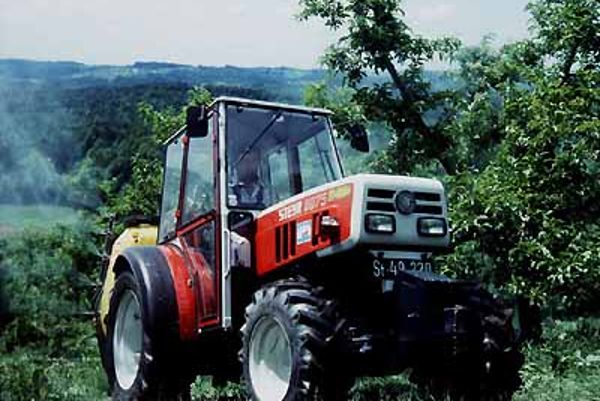Integrated pest management

Integrated pest management is a combination of all-natural measures and the sparing use of chemical plant protection products for crop protection against diseases and pests.
Target group
Anyone who uses plant protection products professionally in agriculture and forestry is obliged to implement integrated pest management.
By virtue of an EU directive, the general principles of integrated pest management have been compulsory since 1 January 2014.
Definition
Integrated pest management is defined as the careful consideration of all available pest control techniques and subsequent integration of appropriate measures that discourage the development of pest populations and keep plant protection products and other forms of intervention to levels that are economically justified and reduce or minimise risks to human health and the environment. Integrated pest management emphasises the growth of a healthy crop with the least possible disruption to agro-ecosystems and encourages natural pest control mechanisms.
The purpose of integrated pest management is to combine as well as possible the various techniques of biological and chemical plant protection as well as physical and biotechnical measures.
General principles of integrated pest management
- The prevention and/or suppression of harmful organisms should be achieved or supported, among other options, especially by:
* crop rotation
* use of adequate cultivation techniques (e.g. stale seedbed technique, sowing dates and
densities, under-sowing, conservation tillage, pruning and direct sowing)
* use, where appropriate, of resistant/tolerant cultivars and
standard/certified seed and planting materials
* use of balanced fertilisation, liming and irrigation/ drainage
practices
* preventing the spreading of harmful organisms by
hygiene measures
* protection and enhancement of important beneficial organisms, e.g. by adequate
plant protection measures or the utilisation of ecological infrastructures
inside and outside production sites. - Harmful organisms must be monitored using adequate methods and tools, where available. Such adequate tools should include field observations as well as scientifically sound warning, forecasting and early diagnosis systems, where feasible, as well as the advice from professionally qualified advisors.
- Based on the results of the monitoring the professional user has to decide whether and when to apply plant protection measures. Robust and scientifically justified threshold values are essential components for decision making. For harmful organisms threshold levels defined for the region, specific areas, crops and particular climatic conditions must be taken into account before treatments, where feasible.
- Sustainable biological, physical and other non-chemical methods must be preferred to chemical methods if they provide satisfactory pest control.
- The pesticides applied shall be as specific as possible for the target and shall have the least side effect on human health, non-target organisms and the environment.
- The professional user should keep the use of pesticides and other forms of interventions to levels that are necessary, e.g. by reduced doses, reduced application frequency or partial applications, considering that the level of risk in vegetation is acceptable and they do not increase the risk for development of resistance in populations of harmful organisms.
- Where the risk of resistance against a plant protection measure is known and where the level of harmful organisms requires repeated application of pesticides to the crops, available anti-resistance strategies should be applied to maintain the effectiveness of the products.
- Based on the records on the use of pesticides and on the monitoring of harmful organisms the professional user should check the success of the applied plant protection measures.
To warrant adherence to these principles in agricultural practice, crop- and sector-specific guidelines have been developed.